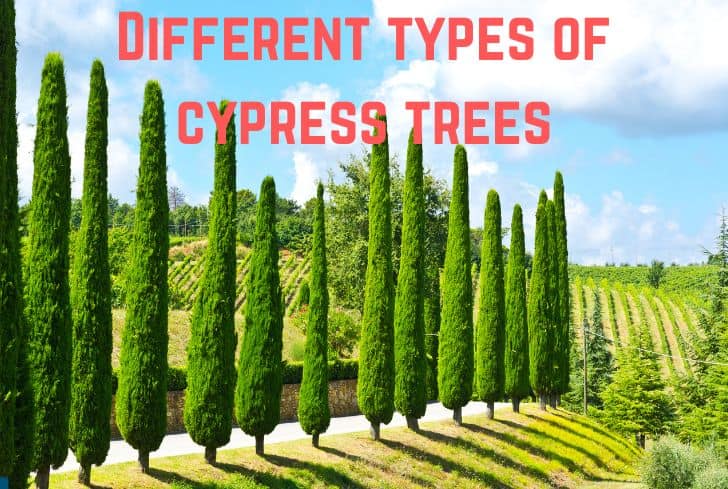With soft, feathery evergreen foliage, Cypress trees make an attractive addition to any landscape. Their nearly 130 species are native to almost every climate and habitat.
If you want your winter garden to have a more dramatic flair, adding a cypress tree with its thick, green foliage is a terrific way to add color to your landscape.
Cypress trees can give a sufficient amount of shade in the yard without the need for a great deal of laborious upkeep because of their ability to grow to quite large heights. However, did you know that there are more than 130 kinds of cypress trees worldwide?
In this article, we are going to take a look at 13 different types of cypress trees.
Read: Types of Dwarf Birch Trees
13 Different Types of Cypress Trees
The diverse and graceful cypress tree family encompasses a wide array of species, each possessing unique characteristics and adaptations. Below, we delve into 13 different types of cypress trees, showcasing their individual beauty and ecological significance.
1. Italian Cypress (Cupressus Sempervirens)
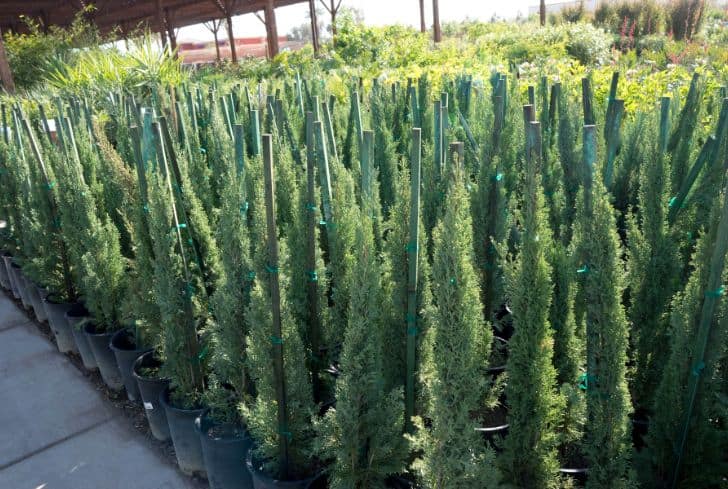
The new growth of an Italian Cypress tree may attain a height of between 3 and 5 feet every year. This attribute contributes to the tree’s reputation as a fast-growing species. These trees typically reach heights of 30 to 40 feet with a somewhat thin crown and are adaptable.
They do not get cultivated, reaching a width of just 5 feet when mature, which makes them an excellent choice for use as accent privacy barriers. Driveways and walks are common locations for planting Italian cypress trees because of their regal appearance.
2. Monterey Cypress (Cupressus Macrocarpa)
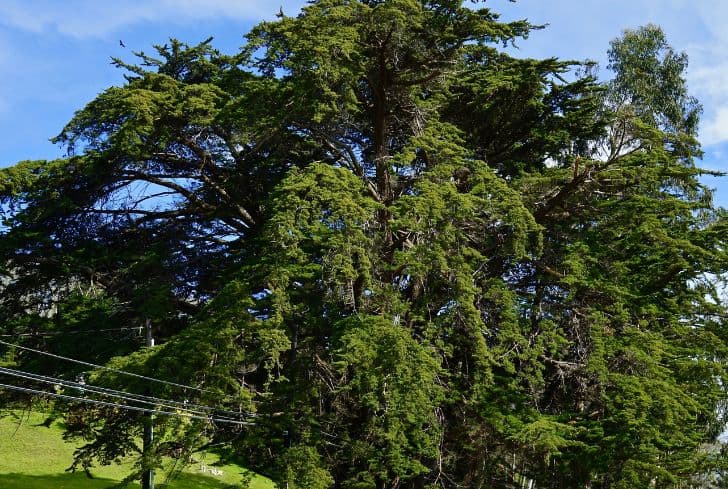
As coniferous trees of moderate size, Monterey cypress trees are endemic to California. The top of the cypress tree is distinctively flat and extends in a lateral direction.
The height of a mature Californian cypress tree may reach up to 40 meters (130 feet). The species is native to the United States, but you may also find them growing in Europe, New Zealand, and a few nations in Africa.
When the leaves of Monterey cypress trees are crushed, a lemony odor is released. These leaves are scale-like and have a vivid green color.
As the tree ages, its hard, fibrous bark becomes a grayish tint and peels away in strips. Monterey cypress trees exhibit this characteristic. Oblong in shape, the conifer cones that develop on Monterey cypresses may reach a length of up to four centimeters in length.
3. Bald Cypress (Taxodium Distichum)
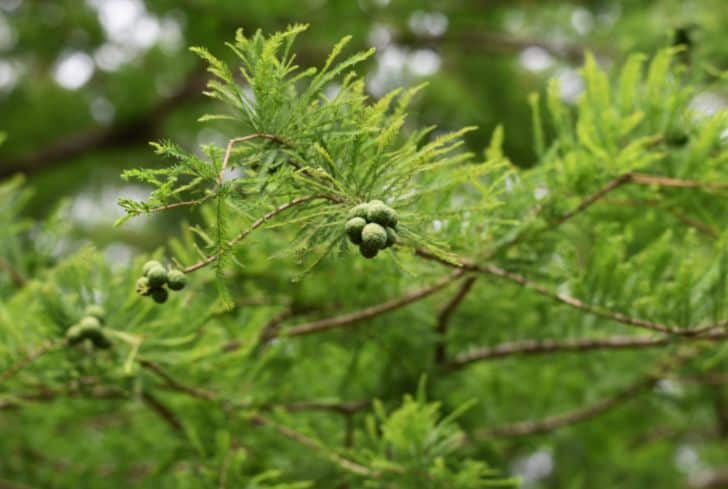
Bald cypress one is native to Florida and does very well in wetter environments such as ponds, marshlands, and flood zones, where it may almost flourish. The species gets its name from the fact that it loses all of its needles throughout the winter.
Bald cypress may reach heights of up to 70 feet and can survive in dry soils, making them an excellent option for any garden. They are characterized by their upright and triangular structure and the roots wound around the knees.
4. Blue Cypress
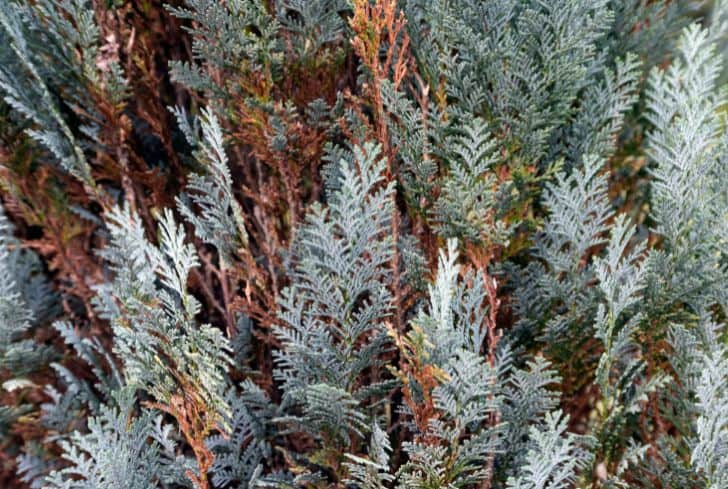
The bluish-green tint of the foliage of blue cypress trees is where the tree gets its common name. The tree is often used in residential and commercial settings for landscaping.
The Southwestern United States and Northern Mexico are among the leading nations in the Blue Cypress tree population. One thing about these trees is they have a high resistance to disease and a very sluggish pace of development.
5. Gowen Cypress (Cupressus Goveniana)
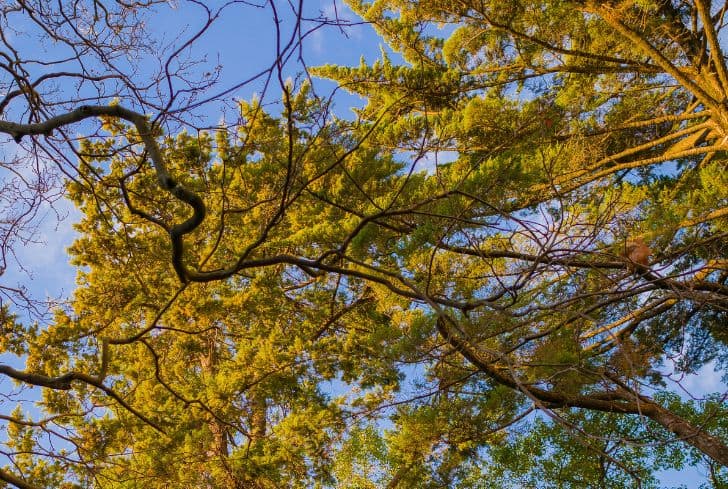
The Gowen Cypress tree is naturally common in the Southern region of the United States. The tree typically grows in swampy or boggy forest areas.
The height of individuals in this species may vary widely, although they often reach 30 feet or more. This species is a giant evergreen cypress known for producing trunks and branches often bent in shape.
The trunk of the Gowen cypress tree may have a variety of colors, ranging from yellow to brown to gray, depending on the tree’s age. The tree loses its leaves in an alternating pattern and typically has 6 to 11 leaflets per leaf, with some growing up to 1 meter (about 3 feet) long.
6. Kashmir Cypress (Cupressus Cashmeriana)
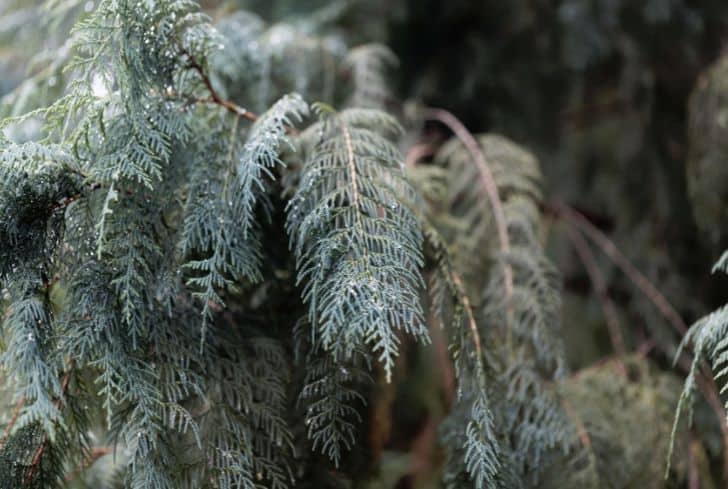
No other cypress species can compare to the beauty and elegance of the Cupressus Cashmeriana, which, despite its name, is indigenous to Bhutan and not Kashmir.
Despite its potential benefits, there are two critical reasons why it may not be advisable to incorporate it into any environment. Firstly, it can only thrive in Zone 9, limiting its adaptability to various regions. Secondly, its tendency to grow to an immense size creates practical challenges, making it impractical for widespread recommendation.
But as long as you have the necessary space and are located in an area with a pleasant temperature, there should be no barriers to consider.
This plant’s drooping branches add a soothing charm as they sway gently in the wind, while the attractive blue-green tint of its foliage allows for seamless pairing with almost any other color scheme.
Plus, even though this tree was originally from a location that experiences monsoons, it performs pretty well in gardens with just a modest amount of watering.
Read: Types of Cedar Trees
7. Nootka Cypress (Cupressus Nootkatensis)
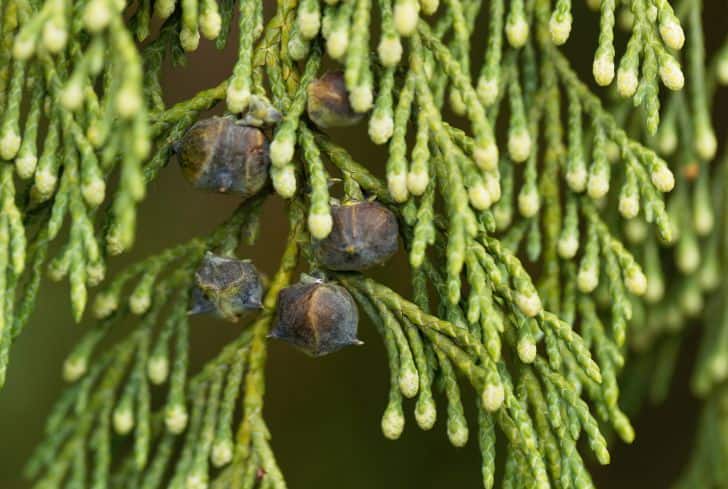
The Nootka cypress, the Alaskan cypress, or the Yellow Cypress, is a tree indigenous to the west coast of North America, ranging from Northern California to Alaska. It thrives in chilly climates and, preferably, in USDA Zone 9, although it may even thrive in Zone 5 if conditions are right.
Now, we’ve got numerous types of Nootka, but the Green Arrow is by far the most common and popular garden culture. It is characterized by a compact form abundant in dark green foliage and has a compact root system that won’t take up much space.
This tree has the potential to reach a height of 20 feet and a width of 2 to 3 feet. Therefore, it is an excellent choice for cultivating a tree in a restricted space, such as a small garden.
8. Chinese Weeping Cypress (Cupressus Funebris)
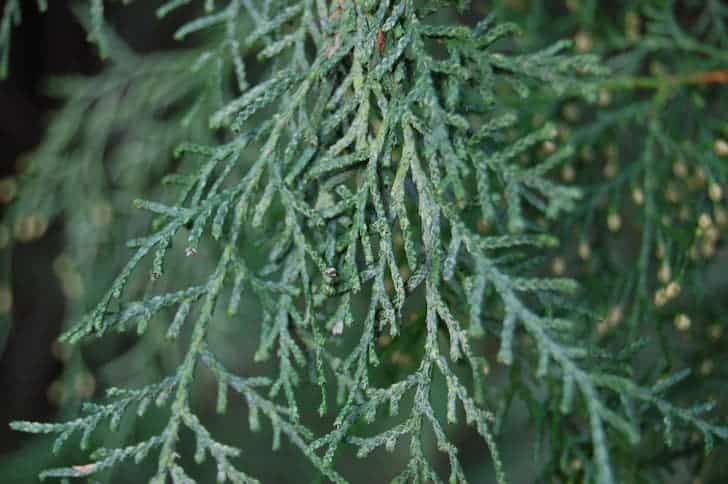
The Chinese Weeping Cypress is yet another well-liked kind of Cypress Trees. It is distinguished by its medium-sized coniferous growth and its pale green leaves. Because of the way it looks while it is in mourning, it is also known as the Mourning Cypress.
The tree seems to be in a state of sadness due to the drooping limbs that dangle off of it. The tree’s growth pattern makes it a good choice for use as an attractive evergreen tree.
The majority of its propagation takes place in expansive gardens and public parks. The tree thrives in zones 7-10 and will appreciate at least half the day in the sun and the other half in the shade. At maturity, it may reach between 20 and 30 feet.
9. Arizona Cypress (Cupressus Arizonica)
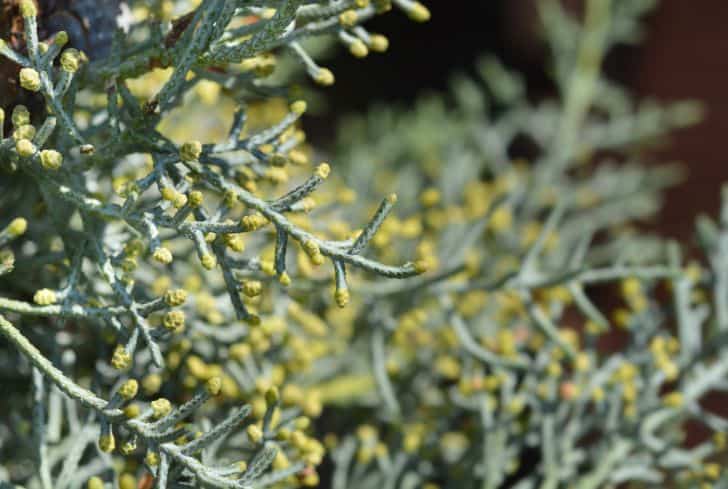
As the name goes, the Arizona tree is mainly grown in Arizona. It is one of the most beautiful trees in the world, producing yellow flowers in later winter and early spring.
The tree requires full sun for 6 hours each day and can provide shade in summer and winter months. It can grow up to 50 feet tall and comes up in a pyramidal shape which makes it excellent for Christmas trees.
10. Dwarf Cypress
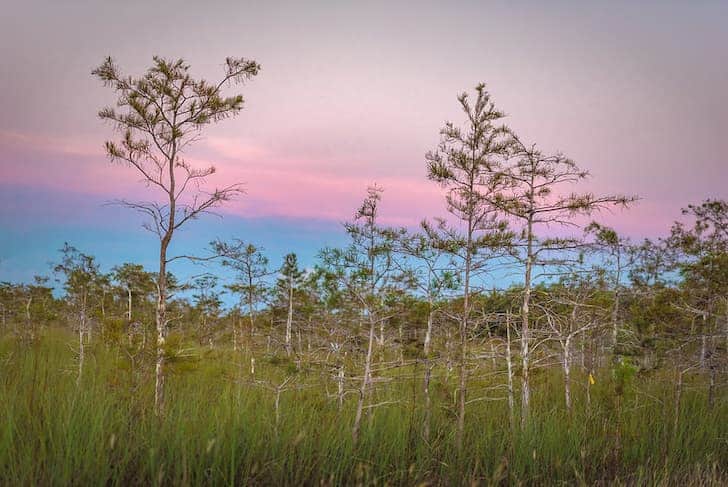
The Dwarf Cypress tree is a little, fragile tree native to the Southeast region of the United States. The evergreen shrub is low to the ground and has a broad, flat crown. The tree has the potential to reach heights of between 20 and 30 feet when fully mature.
The leaves are shaped like needles and grow in a manner that is low to the ground. This tree is known to produce stunningly lovely white blossoms somewhere between the end of spring and the beginning of summer.
11. Hinoki Cypress (Chamaecyparis Obtusa)
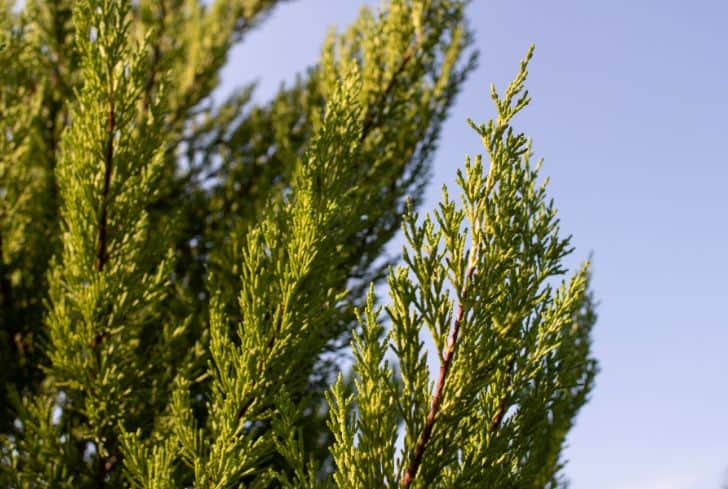
This one is indigenous to Japan and is considered an important character in Shinto rituals. It is a cypress that matures slowly and has the classic pyramidal shape. The tips of its leaf have a drooping appearance, while the foliage itself is needlelike, dark green in color, and seems glossy.
They may become quite tall, sometimes reaching heights up to 80 feet. There is also a kind of dwarf Hinoki cypress perfect for growing inside containers.
12. Lemon Cypress
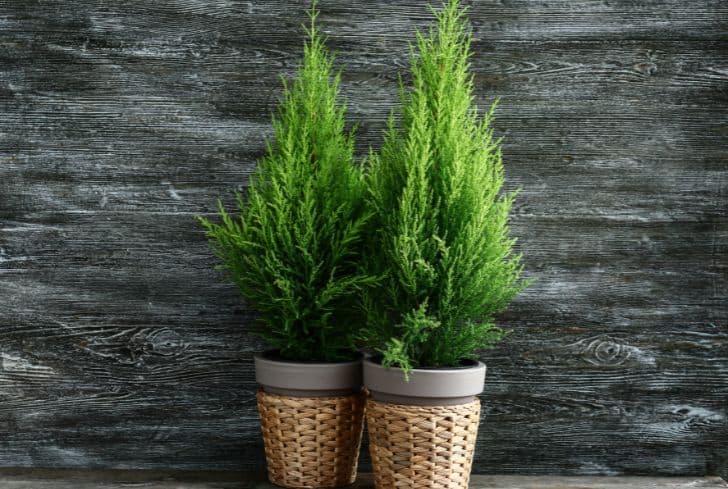
Lemon cypress may very well be the most well-liked landscaping cypress available. They are cherished for the velvety texture of their leaves and the golden-yellow hue they maintain throughout the year. It has a columnar growth pattern, spherical cones, and scaly bark. It also has a good appearance.
13. Leyland Cypress (Cupressus Leylandii)
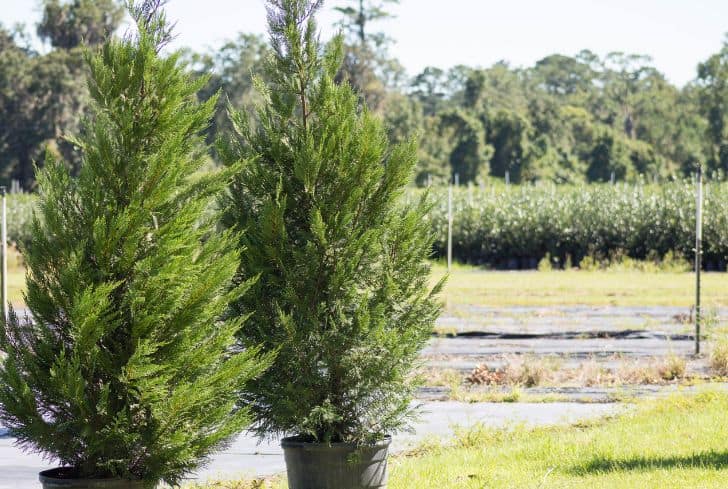
The Leyland cypress tree is distinguished by its thick foliage and wide columnar growth that takes the form of a pyramid. The Leyland cypress has a fast growth rate with the potential to grow between 18 and 36 inches (45 and 90 centimeters) per year. Because of these characteristics, Leyland cypress trees are excellent choices for use as evergreen hedges or privacy.
To create a natural, living hedge, plant Leyland cypress trees next to one another in areas that receive enough light. A natural, evergreen fence between 2 and 7 meters tall may be grown to offer seclusion to a garden. The height of the fence should be between 6 and 22 feet.
